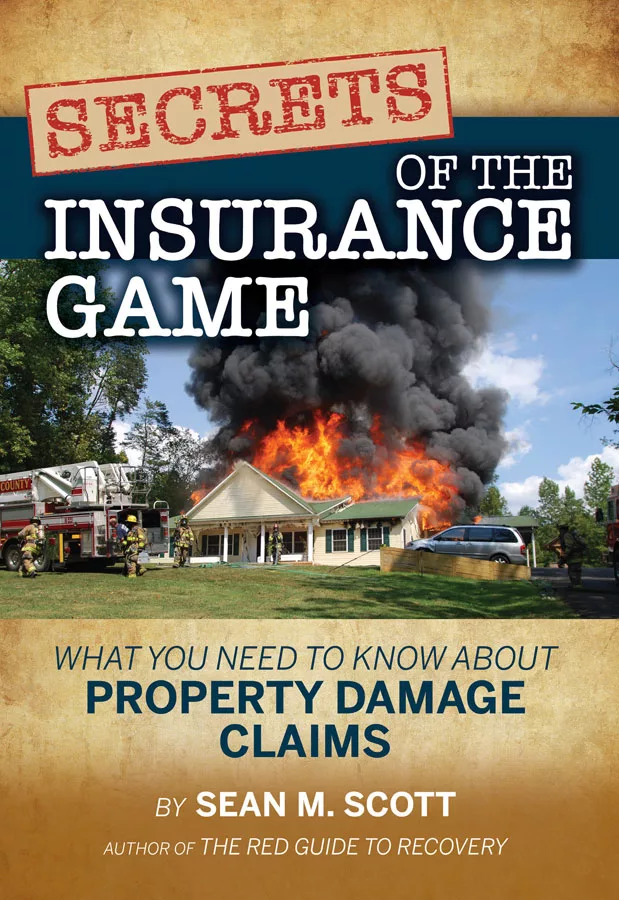Who’s Got Your Back?
In practice, restoration firm owners have to depend on others to help them manage the risks in their business
A Grand Canyon white water rafting guide will tell you, “You are primarily responsible for your own survival.” And if you own a company, you are the person that must be primarily responsible for the survival of your business. There may be a person like the white water rafting guide to help rescue you, but in the end the survival of your business comes down to you.
So who has your back in your business? The answer could be your lawyer (hopefully not very often), an insurance agent, a franchisor, a claims network or someone assigned in your office to the risk management function.
In practice, restoration firm owners have to depend on others to help them manage the risks in their business. This is not a bad strategy as long as the person the owner is depending on to watch their back is actually doing the job. Over the past 10 years, I have been amazed at who is not watching the backs of restoration firm owners.
By default, insurance agents take the primary support role in managing the risks of most restoration firms. Insurance agents, for some of the reasons discussed below, face an unusually tough job working with a restoration firm. This is because restoration firms have highly specialized insurance needs today and the insurance agents have no education venues available to help them figure out what those special needs are.
When the insurance companies blew out the basic General Liability (GL) insurance coverage for any job involving Category 3 water, (which was hidden provision in the mold exclusion), they created a situation where only a modified package insurance policy combining GL and Contractors Pollution Liability (CPL) coverage can work to adequately insure a water/mold restoration firm today. In reviewing hundreds of insurance programs on restoration firms I have never seen an exception to this rule.
The combined GL/CPL package insurance policy needed by every restoration firm today was originally invented for nuclear bomb plant clean-up contractors. It should be of no surprise that an insurance policy originally designed for nuclear clean-up contractors would need a lot of modification in order to work for a restoration firm.
Where realistically could an insurance agent go to learn about nuclear bomb plant clean-up contactor insurance policies? The answer is nowhere, which explains why more than 90% of restoration firms go to work every day with glitchy liability insurance coverage.
We work with thousands of insurance agents in my wholesale insurance brokerage firm. I do not know of a single insurance agent that is not trying to do their best to watch out for their clients every day. I blame the dearth of insurance agent training opportunities for the insurance coverage shortfalls in the restoration business today. Insurance agents cannot be the sole source of your survival strategy.
Many owners who are part of a franchise operation assume the franchisor has their backs. That can be a big mistake. Not to paint franchisors in a bad light, none of them intentionally work against a franchisee (that seems to happen by accident). The reality is the main focus of franchisors is on the franchisor first, the overall franchise network second and, finally, to the individual franchisee. This hierarchy of priorities tends to shift risk down to the individual franchisee that usually has to indemnify the franchisor for any liability the franchisor or the franchisor’s clients incur as a result of the operations of the franchisee. Many franchisors offer training to improve the safety record of the overall franchise group, which is a good thing. But here is where things get unexplainably weird. Many of the major franchisors increase the risk of their individual franchisees by doing these things:
- Forcing or endorsing insurance designs onto their franchisees that contain material insurance coverage design flaws. For example, promoting insurance programs that use separate GL and CPL policies on restoration firms, that makes no sense to me considering the irresolvable coverage defects that insurance program design injects into a insurance program.
- Failing to monitor compliance with the franchisor’s own insurance specifications.
- The franchisor enters into master service agreements indemnifying the insurance company to levels far exceeding the individual franchisee’s ability to pay a loss in order to secure work under a master service agreement. If you and the franchisor have good insurance, it should step in to seamlessly pay these losses. However a glitch in the insurance coverage exposes the individual franchisee through indemnity agreements to an elevated level of risk.
But it is not the franchisor’s job to watch your back, they are watching out for their interests and the overall group of franchisees, not you. That is only a problem if you assume they have your back when they don’t.
In my experience, the folks that do the best job in watching your back are the larger claims networks. It is not their job to watch your back either. But by default in watching their own backs, they do a better job than most franchise organizations or insurance agents in making sure you are properly insured. Those dreaded insurance specifications and the insurance certificate review process of the more sophisticated networks create the best informed risk management support that most restoration firms will have access to. But you will need to be proactive in taking advantage of these free resources. It is very easy for well-wishing honest people to short circuit the certificate of insurance system that was designed by experts in the restoration business primarily to protect you.
As an example of how easily the support system can be short circuited, I recently compared the separately purchased GL and CPL insurance policies on a full service restoration firm to the insurance specifications of the franchisor and the two networks the firm was a member of. Of the three sets of contractual insurance obligations, the insurance requirements from the franchisor were the most rigorous. By default, compliance with the franchisor’s insurance requirements would have automatically complied with the two network’s insurance requirements. The insurance agent for the restoration firm had dutifully completed the detailed insurance certificates for the networks and franchisor from this basic dual policy insurance program design which had remained unchanged for at least six years.
I know the owner of the firm personally. He is one of the deeper thinkers on risk management concepts in the entire restoration industry. I also know his insurance agent, who is an accomplished specialist in contracting risks. The owner of the restoration firm has purchased his GL insurance from a well established cleaner’s association-sponsored insurance program that has been part of the IICRC for years. The insurance companies providing the GL and CPL insurance on the restoration firm were both “A”-rated companies.
In this example, the owner had done everything right in his risk management strategy to assure his survival. He had surrounded himself with these pros to watch his back:
- His insurance agent
- The franchisor
- The two networks
- The cleaners association
- Insurance regulators
What was the outcome of my insurance policy review against the insurance requirements in his three contracts?
Within 12 minutes I had figured out the insurance on the firm failed to meet the insurance requirements in the three contracts in 16 different places. The implications of this situation are: the firm is and has been uninsured for things the franchisor and networks thought were important enough to detail specifically in an insurance requirement and, all three organizations would shut him off from new work if they knew he was non-compliant on just one item in their insurance specifications. Nobody he was depending on had his back.
What happened to short circuit so many levels of potential help for this firm?
- The franchisor has good insurance requirements, actually the best in the business. But the franchisor has no review process in place to evaluate the actual insurance carried by the franchisees.
- The insurance agent did not pay close enough attention to the insurance requirements or may never have seen the insurance requirements in the three contracts. As requested by the contractor, the insurance agent issued insurance certificates over the years representing coverage on the certificates of insurance that was not in the policies. With compliant insurance certificates in hand, all three organizations never questioned the underlying insurance of the restoration firm - there was no reason to.
- Issuing insurance certificates that misrepresent the coverage in the actual policies is now illegal in more than 40 states, including the state this firm and their insurance agent are located in. I know the insurance agent on this firm would never knowingly break the law, especially 96 times. Even insurance regulations on bogus certificates of insurance that could pull the insurance agent’s license or subject the agent to criminal prosecution in the state did not prevent bogus insurance certificates from short circuiting the benefits of three very good sets of insurance specifications.
- No one involved with the cleaner’s association insurance program knew anything about the special insurance needs of restoration contractors. The cleaner’s association insurance program was originally designed for cleaners not restoration firms working under heavy-duty indemnity contracts with insurance companies. The insurance coverage promoted by the association works fine for cleaning firms. Somebody trying to help this restoration firm bent the underwriting rules years ago to fit this restoration firm into the association program. The key is someone not very well informed was trying to help the firm.
- The insurance agent was trying to provide responsive service to their customer and pushed out certificates of insurance as soon as they were requested without carefully comparing the insurance in force to the insurance requirements in the three contracts.
Bottom line is that in this real world example, no one had the owners back. To get to that point, five levels of checks and balances had to be actively circumvented year after year by the people that the owner thought were watching his back. None of the circumventing moves made by the support people were intended to cause harm to the firm, but they did.
The moral to the story, you are primarily responsible for your own survival, both personally and in business. You can get some help from others, but you need to make sure they know what their job is and you need to make sure that job is getting done. For more than 90% of restoration firms, the job is not getting done today.
Looking for a reprint of this article?
From high-res PDFs to custom plaques, order your copy today!







